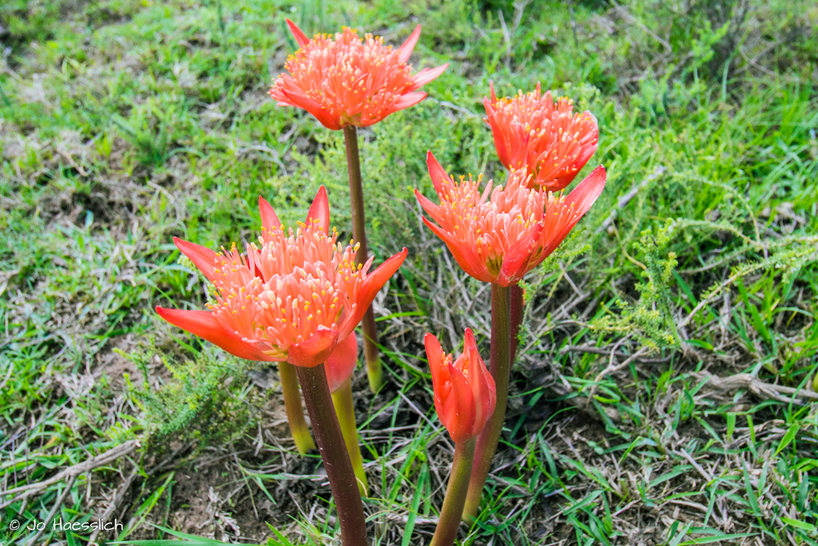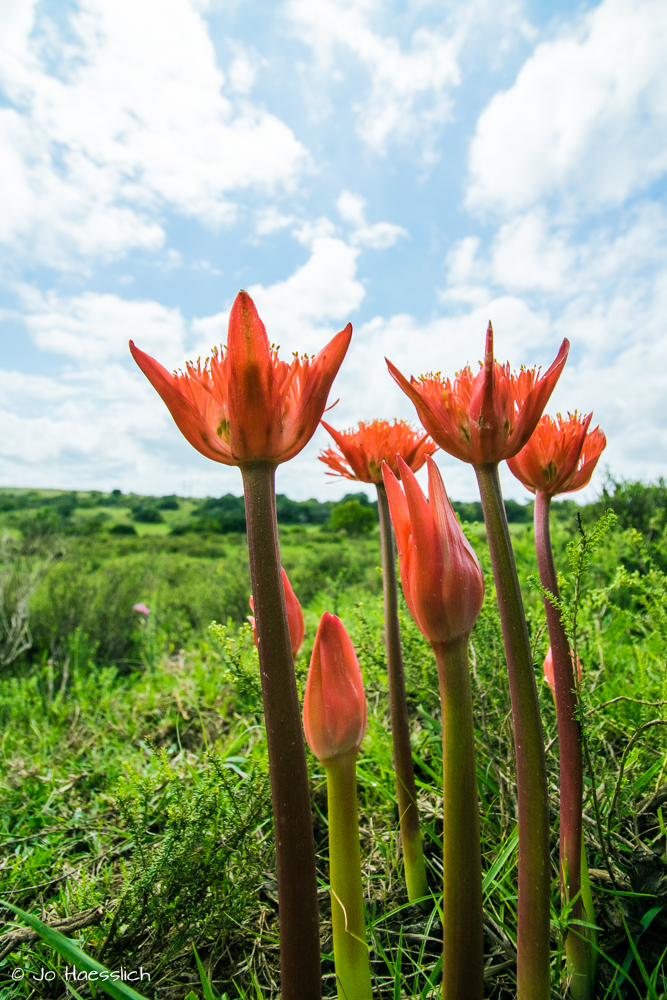Photo: Paintbrush Lily

If you truly love nature, you will find beauty everywhere ~ Vincent van Gogh
Our Photo of the Week is of the striking paintbrush lily. This plant is also known by many names including the blood lily, March lily, April fool lily and powderpuff lily. It is indigenous to Southern Africa. The scientific name for this plant is, Haemanthus coccineus, also describes their gorgeous orangy-red flowers. The word haima is derived from the Greek word for blood, anthos means flower and coccineus is the Latin word for red or scarlet.
Paintbrush Lily Flowering Season
The flowering time for the paintbrush lily is between February and April each year. The Kariega landscape explodes with patches of red when the bulbous plant flowers. This makes for stunning photos against the green background.
These lilies stay dormant underground all year until the right weather conditions arise and then they quickly sprout to form flowers. They are pollinated by a variety of insects including butterflies and honey bees. After pollination their fruits form and attract animals such as mice, rats and even monkeys and birds. These creatures help to disperse the seeds to different areas on the reserve.
An interesting thing about the paintbrush lily is that the leaves only show after the flower has sprouted. Usually it is the other way around.
Medicinal Properties of Paintbrush Lily
The fresh green leaves of the paintbrush lily can be applied as a dressing to septic ulcers and sores. The bulb can also be sliced and then boiled in vinegar and mixed with honey. This mixture can be used to treat asthma and can also be effective as a diuretic (flushing toxins out of the body through urination).
Did you see any of these stunningly vibrant flowers when visiting Kariega for your safari? Please share any images and comments with us on our Facebook page, via Twitter or Instagram. We also welcome your comments on our blog.










